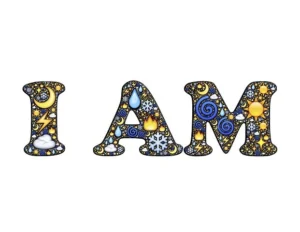Like all forms of yoga, Yin is so much more than just physical. The slow, meditative and introspective process of the yin yoga practice is a unique opportunity to dive deep!
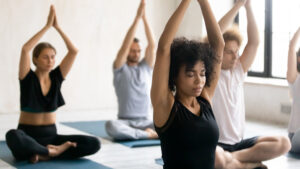
This may be the reason why so many people feel like they cannot practice Yin. Yin can be an amazing teacher of self love, self acceptance, personal growth and possibility. But it also can be very confrontational. When we sit with ourselves in stillness many things can happen; thoughts arise, old memories resurface and sensations can cause fear. This is why it is necessary to practice mindfulness techniques that can help us navigate back to our true selves In each practice. But like they say, when the student is ready the teacher will appear. So if it is difficult to be still, to see your thoughts without breaking down into tears, anger or frustration, or to feel sensations in the body without fear, then one may need something else for now. Or maybe Yin is exactly what one needs to deal with these issues once and for all and to step into the third chakra and take the reigns of your power back.
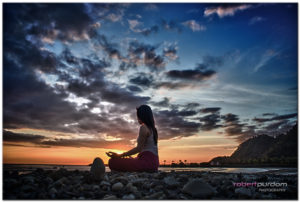
Over the years I have developed a meditation practice specifically for Yin yoga classes that I call, Atta meditation. Atta means “watch tower” in Sanskrit and along with Annapanna, a simple breath awareness, one can develop concentration and the ability to see thoughts as thoughts and not who we are. This can help the student witness thoughts, feelings and sensations without reacting to them. This is a powerful wake up call for students. Firstly, Anapanna is from the Vippassa tradition of Buddhism where we use the sensation of breath moving in and out through the nose to create a space to build this watchtower and begin witnessing thoughts. Oprah said that when she heard the phrase, “You are not your thoughts”, for the first time it was one of the biggest ah ha moments of her life. When we witness thinking instead of letting the mind rule the roost during our practice we feel empowered and we break free of the cycle of ups and downs in life that can make us feel unstable and ungrounded.
Oprah said when she heard the phrase you are not your thoughts it was a huge aha moment for her. See her here with Eckart Tolle
Using Annapanna meditation we feel the breath ski mming across the skin below the nose. Easy, right? But at first the mind will constantly try to divert our attention elsewhere. Thoughts and sensations and sounds outside the body can bring us away from our watch tower and the breath. So through this process we reign in the awareness bringing it back into the watchtower where we again become the witness to everything.
mming across the skin below the nose. Easy, right? But at first the mind will constantly try to divert our attention elsewhere. Thoughts and sensations and sounds outside the body can bring us away from our watch tower and the breath. So through this process we reign in the awareness bringing it back into the watchtower where we again become the witness to everything.
As we practice these awareness techniques over and over again we develop our Dhurana, Sanskrit for concentration. As our concentration improves our meditation improves as well as our ability to be in one place at a time with focused attention. Yin yoga provides us with a huge opportunity to become more aware of “what is”, we call it Yatta Butta. This is truly a practice of self-acceptance. When we can see the thoughts, feel sensations and hear distractions outside ourselves without allowing our inner space to be disrupted, this is the Power of Yin, this is true empowerment.
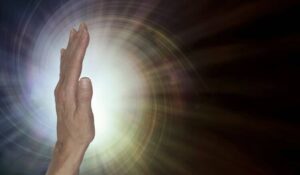
Where the mind goes, the energy flows.
You may have heard the phrase, “where the mind goes, the energy flows”. Your mind is a tool that you can learn to control to guide your energy in the direction of your choosing. Once we are able to let go of unconscious thinking we can use the mind to bring focus to the task at hand and become more peaceful and focused.
While in the Yin Yoga postures we can direct our energy towards healing the spaces that arise through the sensations. These are queues as to where tension exists within the body. As tension is focused on with breath and awareness we can begin to transform stress and tension into happiness and bring conscious awareness into areas that may have been neglected, injured or simply places that typically hold stress, such as the neck and shoulders or the hips.
Through our awareness we can bring flow to where flow is blocked. Chi, or Prana, as we call it in the yoga practice, flows along channels called Meridians. When the Chi is blocked or is not flowing smoothly the organs can suffer. The yin postures are designed to target the meridian pressure points, similar to receiving Acupuncture, to enhance Chi health.
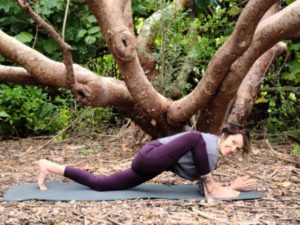
It is understood that the hips are where emotional stress and tension is stored when it is not processed immediately. This is another reason why some people find it difficult to practice.
The hips, sacrum and lower back are the main targets of Yin Yoga. As we focus on these areas we help improve the range of motion, or flexibility, in the six directions the hips are meant to move: including the inner and outer rotation, flexion and extension, and abduction and adduction. As we sink deeply into each posture the old emotions and memories are jarred loose and brought to the attention of the practitioner.
The way to process this old information is to witness it and breathe through it. We cannot move around pain if we want to remove it. Moving through it may look like tears or uncomfortable sensations or old memories becoming clear in the mind momentarily. The breath is the key to set you free. We can shift our attention to riding the waves of breath, instead of the waves of thoughts within the mind. It takes persistent effort at first.

This process is like peeling an onion. Through the Yin practice we have an opportunity to reveal our true nature, the deepest layers of ourselves, our center, if you will. The Soul of Yin is about finding the courage to go deeper than you ever have before. To see what is truly happening inside yourself. Someone described being spiritual as the willingness to be introspective. Yin takes us inward so we can untangle the mess our society has told us that we are. Maybe it was our parents, our schooling or even our partner. Once we begin this process the truth will be revealed layer by layer, practice by practice and breath by breath. Enlightenment does not typically occur as a landmine going off as it has for some of the teachers we may be familiar with. Eckhart Tolle, the author of The Power of Now and A New Earth, suddenly experienced an awakening while moping in his apartment feeling deeply depressed. That experience was followed by 3 days of bliss sitting on a park bench. No food, No water. Just witnessing life in the present moment, the now!. Byron Katie, the creator of www.thework.com had hit rock bottom. As she laid on the attic floor contemplating death a cockroach crawled over her body and suddenly she saw the truth of existence. David R. Hawkins was a researcher of consciousness and was overcome with bliss one day. If it wasn’t for his wife taking care of him he would have slipped away into Nirvana. But she convinced him to start eating again so he could share the teachings of his experience and write the book, Power vs Force.
I know many people who have had less intense but deeply impactful experiences of awakening. It varies from person to person but experience doesn’t lie. When we are present and still, we can see things as they are, Yatta Butta. Acceptance of the thoughts as thoughts takes us deeper into this awareness. It’s a daily practice that becomes easier over time. For myself, the more dedicated I am to the practice of present moments awareness without judgement, the happier I feel and the longer the waves are. If we can witness the wave, see it coming towards us. It may be a small nudge in your belly, or a headache, or just a feeling when we get triggered by something that is said, heard, felt or even smelt. They do say, smell is the closest sense to our memory.
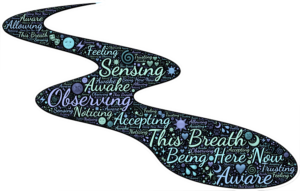
In the Yin yoga practice we simply practice being. This is the goal. To just be in the body as it is without judgment and to witness the thoughts flowing through the mind like clouds floating through the sky and to use the breath below the nose as an anchor to the present moment. It may be way easier said than done, but it’s definitely worth all of the effort.
